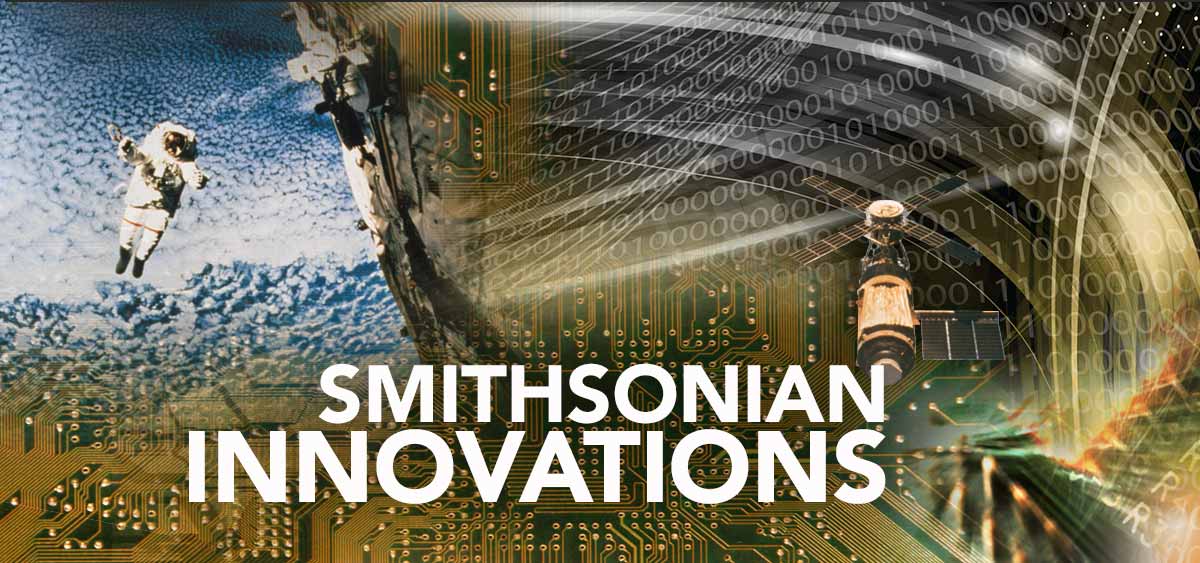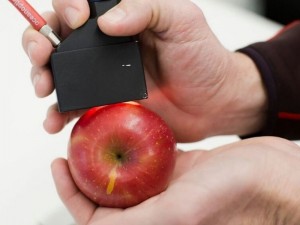Communiqué

You May Soon Be Able to Scan a Piece of Fruit to Check Its Nutritional Value
By: Randy Rieland
Posted on:

There’s so much about an apple you don’t know.
For starters, you have no idea when it was picked. (It likely was much longer ago than you think. In the U.S., apples can sit in cold storage for six months to a year.) You may have a notion of the nutrients it contains, but only a sense. Same with calories, which can vary from apple to apple.
That’s pretty much the case with all fruits and vegetables. Or fresh fish, for that matter.
But there is a piece of equipment, called a spectrometer, that can give you the lowdown, nutritionally and otherwise, of a single food item. A spectrometer works by shining infrared light on a food item. By measuring how that light is absorbed by the chemicals inside, it can identify the food’s molecular composition. It’s been described as an optical fingerprint, and it’s how you’d be able to gauge the nutritional and caloric content of a single piece of fruit.
Making food transparent
Target usually makes you think of clothes and stuff for your home. In recent years, though, the company has shifted more of its focus to selling groceries, and with that in mind, last summer it took a leap into the startup swirl. Together with the MIT Media Lab and Ideo, a Boston-based design firm, it launched the Food + Future coLab, a project focused on finding more innovative ways to produce and present food.
Earlier this year, a group of scientists, engineers, designers and even a farmer or two started brainstorming ideas to change how we buy what we eat. Target’s lead person at the lab in Cambridge, Massachusetts is Greg Shewmaker—his title is “entrepreneur-in-residence”—and he says the connective tissue among all the percolating ideas is giving consumers more options.
“Food transparency, fraud and waste are major issues facing the food industry, and consumers want more options, access and transparency in everything they eat,” he says. Target’s advantage, he contends, is that through the coLab, it’s able to gather feedback and suggestions from people who don’t usually have anything to do with retail.
That brings us back to the spectrometer. The Food + Future team liked the idea of using technology to make food shopping more personable. What if shoppers could use it to see just how nutritious each strawberry or avocado was before they tossed it in a bag? And what if the price of each one was determined by the results?
“We could price produce based on the nutritional weight of the item and offer a discount for produce with lower nutritional value,” Shewmaker explains. The lab has started to test this idea.
Food fingerprints
It’s going to be a while before that’s possible.
By itself, the spectrometer data from one apple doesn’t mean much. It needs to be plotted against the range of all the variations within many, many apples. In other words, there needs to be a huge apple database, and from that, a match can be made.
So, Target has begun the laborious process of building those food databases. In the past few weeks, according to Shewmaker, the company has scanned “hundreds of thousands” of pieces of produce at its distribution centers in Florida and Iowa.
Other food sensors are already starting to hit the market. A handheld spectrometer called SCiO is designed primarily to help people with diabetes and cardiovascular disease track their consumption of carbs, fats and sugar. It sells for $249, plus a $10 monthly fee for the corresponding mobile app. Another, Tellspec, is expected to have a model costing $399 available to the public by early fall. And a device called Nima can tell you in a matter of minutes if there are allergens in your food.
But Target says its goal is to ramp up transparency so food shoppers really know what they’re getting, right down to each piece of fruit. Does that mean it won’t be long until spectrometers become a standard part of its produce departments? Shewmaker says it’s still early to say how Target will scale up its use of spectrometers, but it has developed a prototype, which it just made available to shoppers at one of its Boston stores.
In that same spirit of transparency, Target tested another one of the coLab’s ideas recently at its store near Fenway Park. It’s a concept for a brand they call Good + Gather, and it’s based on the premise that people are likely to respond differently to products where each ingredient is clearly identified on the label. Not in tiny print on the back that makes anyone over 50 give up trying to read it. No, this is on the main label on the front. It could name one or two ingredients, or it could be a list of 25.
The assumption is that the more ingredients on the label, the less popular that item will be. But Shewmaker says they want to see for certain if being so upfront about what’s inside the package really does affect what people buy. More customer testing will happen in Target stores in San Francisco, Minneapolis and elsewhere in Boston later this month.
Good eats
Here are other more recent food innovations:
- When food goes bad: A team of scientists at the Korea Advanced Institute of Science and Technology developed a way to use laser beams to detect when food has gone bad. And, they say their equipment is so simple and inexpensive it could be fitted inside conventional refrigerators.
- Tracking shelf life: Researchers at Indiana University of Pennsylvania have received a patent for a microchip that can serve as a time-temperature indicator that could be attached to milk cartons and containers of other perishable food. According to its inventors, the chip will be able to tell smartphones how much shelf life the milk or food has left.
- Pretend salt: There’s good news for people trying to cut back on salt in their diets. Scientists at the University of Tokyo have created what they call the Electro Fork. It stimulates your tongue with a slight electrical charge so that you taste saltiness. They say it can also cause a taste of sourness, but sadly, it can’t mimic sweetness.
Randy Rieland’s Innovations column appears on Smithsonian.com. Republished with permission. For archives, visit the Smithsonian web site.

